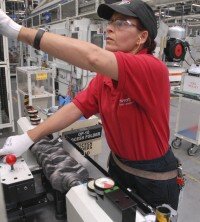In industry, welding is just as important and is used in the construction of HVAC systems and architectural structure. From an economic perspective, welding is even more important: some experts say that welding contributes around 50% to the country’s gross national product.
Regardless of whether you believe that figure, it is hard to ignore the fact that welding is the cornerstone for a number of major industrial processes. It is also a highly skilled trade, so what are the quality standards all welders must adhere to in industry?
Quality Safety Standards
Quality safety standards are inextricably linked to welding safety standards and the two run together, hand in hand. Poor quality welding can cause a number of potentially hazardous safety issues, irrespective of whether a car exhaust has been welded together badly or a gas pipe join is ineffectual. Welding joins must always be rigorously tested to ensure the work meets safety and quality standards. This will eliminate the possibility of any hazardous leaks, which could put the public’s (and other employee’s) safety at risk. Structural welds also need to be inspected by quality inspectors to make sure there is no chance of failure at a future date.
Where is High Quality Welding Typically Used?
There are numerous applications for quality welding. Manufacturing plants, hospitals, commercial premises, food plants, hotels and restaurants all need high quality welding services if they are to meet their own rigorous quality and safety standards. Welding requirements can also be customized to meet the needs of the client if required, particularly in the case of architectural welding. Specialist systems can be fabricated and installed by experienced welding technicians.
How to Identify Skilled Welding Technicians
Quality standards are continually being updated to reflect the changing landscape of industry. As such it is very important that welders remain up to date with the latest quality standards. Welders must maintain a continual program of professional development, which includes maintaining professional certifications.
How to Spot a Poor Quality Weld Joint
In theory the work of an unskilled MIG welders should not be too difficult to spot, but there are certain tell-tale signs to look out for when making quality inspections of welded joints.
Welded joints that lack uniformity, or are pitted with holes or overly bulky, are unlikely to be of great quality. Weld should come through on the underside of the joint as this indicates a strong penetrating joint has been achieved. And in the case of architectural welds, the joint should be flush and smooth.
Welding may be an important skill in industry, but amateurs can also practice their welding skills at home as there are plenty of outlets where you will find MIG welders for sale. However, if you do decide to try welding at home, remember that quality and safety standards are just as applicable, both for your own safety and that of others.

